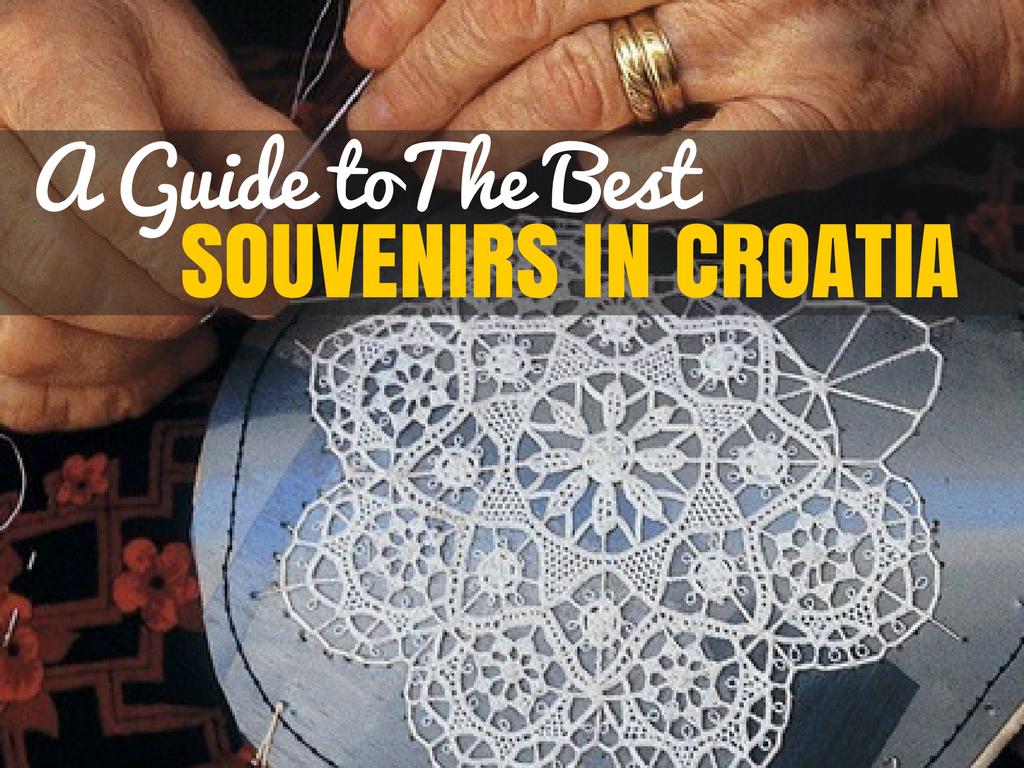
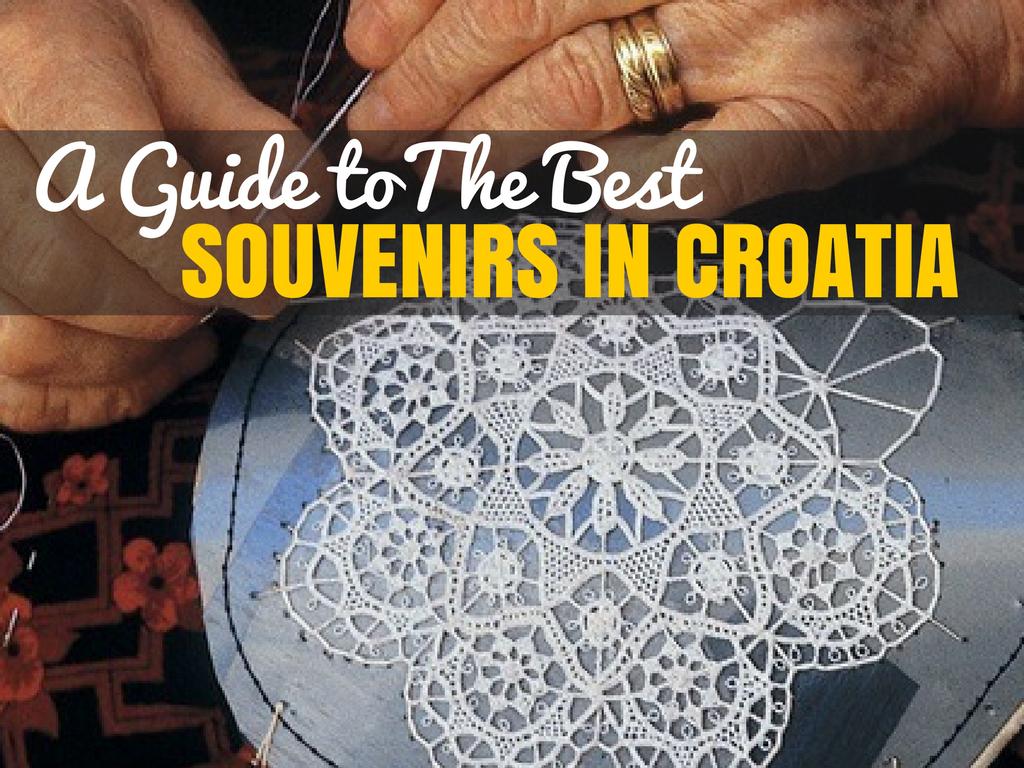
Are you soon to be heading to Croatia’s beautiful shores and like me want to know what souvenirs you can bring home from your Croatia vacation? Don’t fill your suitcase with trinkets that will collect dust. Instead, save your money for these unique, authentic and useful souvenirs from Croatia – some for you and, of course, some for your loved ones back home.
Traditional Croatian Cravat (Tie)
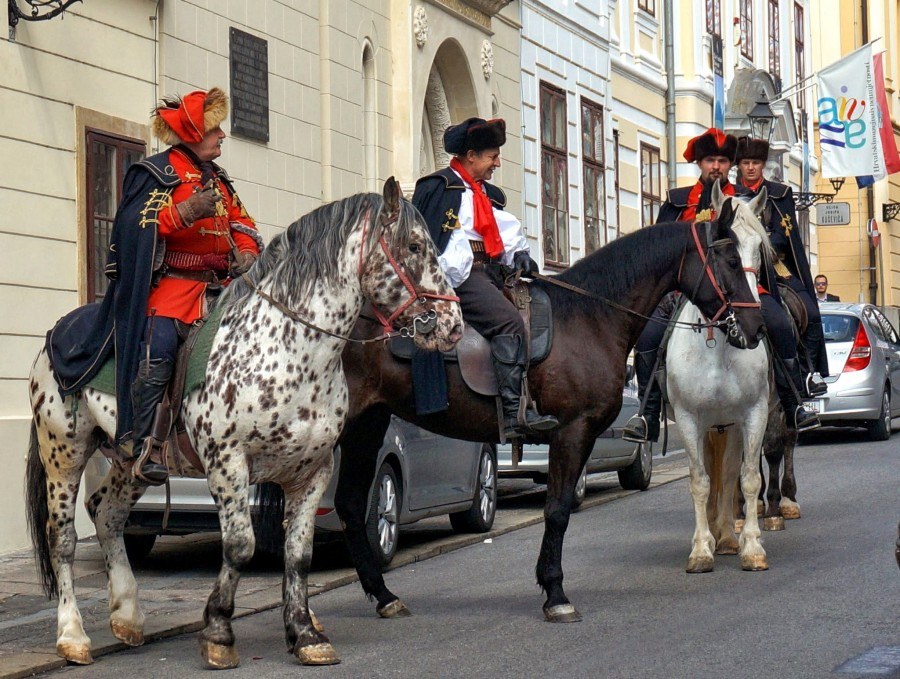
Photo Credit: Erin Johnson
The necktie is more than a decorative piece of fabric. It actually has historical significance in Croatia and is celebrated on International Cravat Day.
Like most things in life, there are a few variations on the actual story, but all of them link back to Croatian mercenaries. Cravats were a part of the uniforms of Croatian soldiers. During the 17th century Prussian Wars, soldiers tied them into their collars to keep them closed. This original necktie was adopted and adapted into modern culture, becoming the fashion accessory it is today.
An alternative explanation is a little more romantic. It is thought that when a Croatian man was called away on business or readied for a dangerous journey, his wife/girlfriend/significant other would tie her scarf around his neck and collar, and he would leave it there to remind him of her love while away.
Either way, a traditional cravat is the perfect Croatian souvenir for the fashionista in your life! You can find them in loads of places across the country.
The Šestine Umbrella From Zagreb
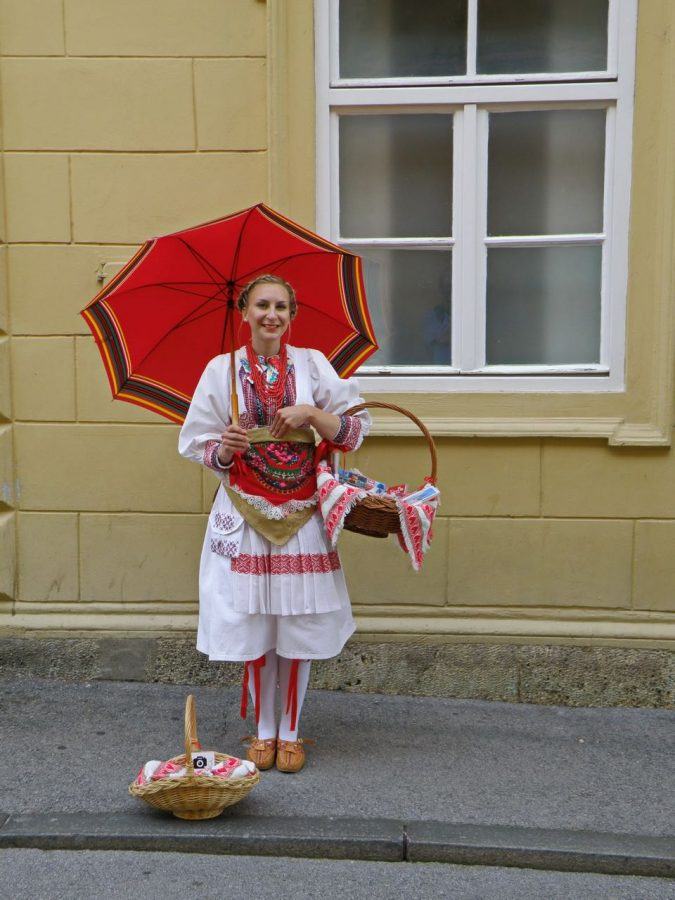
What to Buy in Croatia: Umbrella. Photo Credit: Miroslav Vajdić
The Šestine umbrella is a recognizable souvenir from Zagreb. It comes from Šestine, a small village between Zagreb and Medvednica mountain, and it’s a part of their folk costume. It dates from the 18th century, and the art of making Šestine umbrellas is part of the register of protected non-material cultural goods of the Republic of Croatia.
It is recognizable by the red cotton, canopy with multicolored horizontal stripes on the edges, thick wooden shaft, and naturally crooked chestnut handle. It is used as an accessory to Šestine folk costumes for events and celebrations and folklore purposes, and its design can be seen on many parasols on the stands in Zagreb Dolac Market.
Legend says it’s red because of intense love between two young people, Jankić and Jana, so this lovely souvenir from Croatia is a great symbol of love and playfulness, not to mention serving its purpose of protection from the rain. Today it can be bought as a replica in the souvenir shops for approx 150 Kuna, or as an original in Zagreb from umbrella manufacturers for 600 Kuna.
Samobor Crystal
Just west of Zagreb is the small town of Samobor – the home of Croatia’s crystal glass factories. Artisans create unique cut glass using traditional techniques of hand grinding that date all the way back to 1839. The crystal glassware is exquisite in design and pieces range in size – there’s something for any table waiting to be purchased!
Hint: A visit to Samobor makes for a great day trip from Zagreb, you can head to Kristal Tuk in Samobor to see the magnificent works of art that they create.
Lace From The Islands
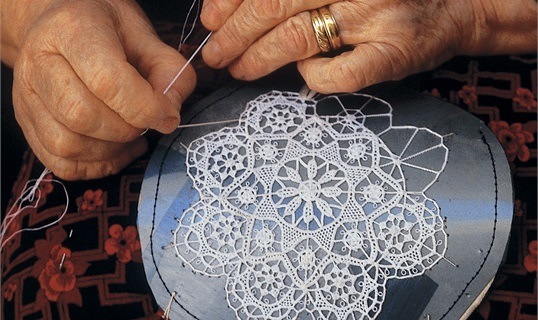
Photo Credit Zadar.hr
Croatian lace is known for its beauty and quality, and Croatian lacemaking was inscribed on the UNESCO List of Intangible Cultural Heritage in Europe in 2009. Croatian lace was traditionally crafted in the country to decorate costumes, linen, tablecloths and bedding.
The three most famous cities for lacemaking in Croatia are Lepoglava in the Zagorje region known for bobbin lace, the Adriatic town of Pag showcasing lace with a needle, and the town of Hvar on the island of Hvar with lace from the agave plant.
Lace from agave leaves in Croatia is produced only in a Benedictine monastery in the town of Hvar and is made by the nuns in the convent. The skill is originally from the Canary Islands (Tenerife) and has been present since the mid 19th century in Hvar. Lace is made from fibres which are obtained from the fresh leaves of the agave plant using a unique method.
Pag lace is world famous for its beauty and quality and is part of the folk costumes of the island, whose canvas pieces adorn clothing in the form of meshes. It is believed to have originated from Mycenae.
Pauline priests in Lepoglava thought to be the ones who brought the art of making bobbin lace. This lace also decorates the edges of costumes and often is used for making lace doilies and fashion accessories.
Each of these adorable handmade lace pieces unites tradition, history, craftsmanship, and beauty, and can be purchased in Croatian souvenir shops at the cost of around several hundred Kuna for a smaller size, and up to 10,000 Kuna for the larger more extravagant forms.
Hint: You can take the lace, and frame it, to make a great piece of artwork for your walls.
Wooden Toys
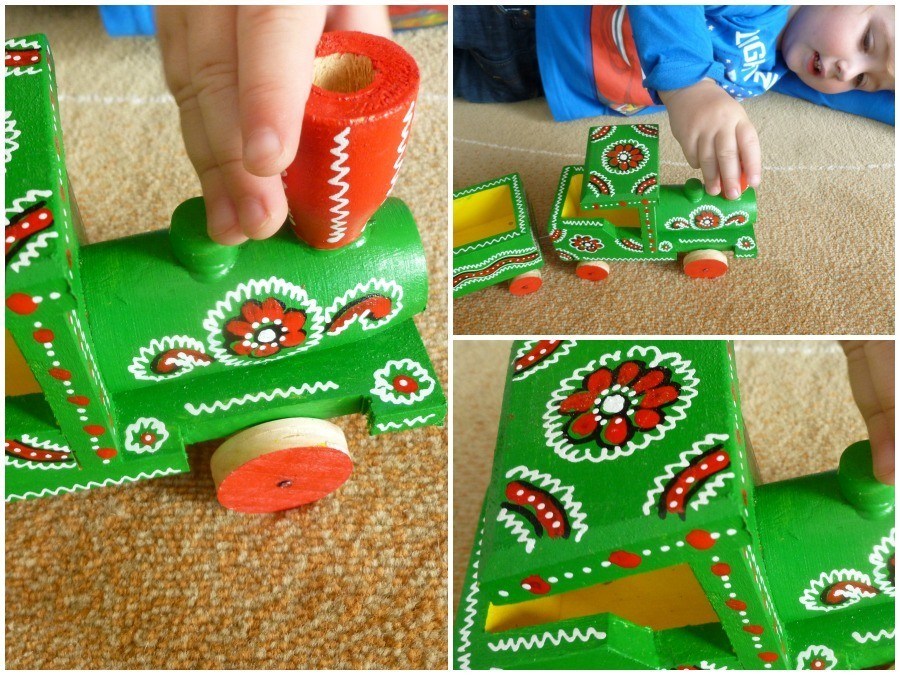
What to Buy in Croatia Traditional Handmade Toys
Handmade in Croatia, in the north of Zagreb in Hrvatsko Zagorje you’ll find toy makers, producing the sweetest wooden toys. Carved by the men (and a few machines) in the village from locally grown willow beech and lime trees. Once carved, the local women paint them in bright, colorful designs.
The fascinating history of this toy making tradition was preserved when the craft was inscribed on the UNESCO Intangible Cultural Heritage List in 2009.
Buying these little souvenirs to bring back from Croatia is so easy, there are so many to choose from, and these wooden toys make such a suitable gift for children! My little Donkey has happily played with his train and plane for several years.
Vučedol Dove From Vukovar
The Vučedol Dove is the most significant individual archaeological finding from Croatia. It was found in 1938 in Vučedol near Vukovar and made between 2800 and 2400. BC.
It is a ceramic model of a bird on three legs, made of baked clay, 19.5 cm high. It is dark in color, decorated with white ornaments in the form of a bow, necklace, and wavy zigzag lines on the wings. The original Dove can be found at the Archaeological Museum in Zagreb, but you can buy a replica at the cost of around 180 Kuna. If you head to Vukovar, you can purchase this souvenir from 45 Kuna for smaller models, up to several hundred Kuna for the larger ones.
Although it is called a dove, it is actually a partridge, and during the war in Croatia was one of the most recognizable symbols of Vukovar, making it a sweet gift to people originating from Vukovar, Vučedol, and surrounding areas as well as for lovers of art, archaeology and history.
Licitar Heart
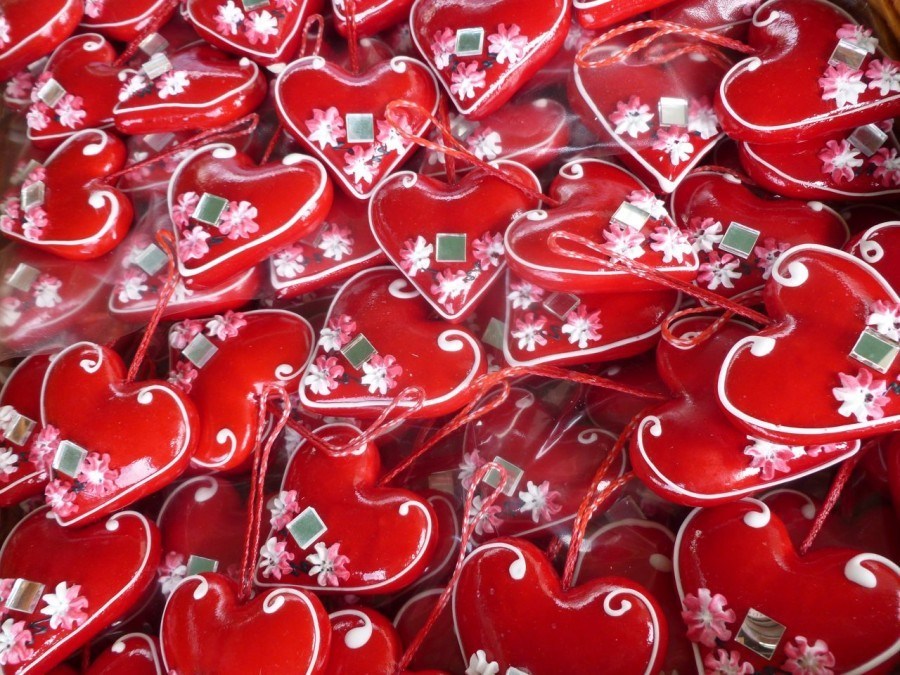
Licitar Heart
One of the cutest souvenirs from Croatia is the heart cake decorated with colorful details. Origins of this treat date back to the Middle Ages in European monasteries where it was made in wooden molds, most often in the form of hearts, mushrooms, cornice, cherry, horseshoe, horses, birds, butterflies or flowers. It is made so that the sweet pastry (made with flour, water, yeast, and sugar) is formed in tin molds, baked, then painted with fruity colors – traditionally a bright red. The cake is further adorned with white, yellow, green, and then decorated with a sugar mixture, mirrors, etc.
These decorative Croatian souvenirs can be purchased all over the country for a few Kuna. Hint: We hang ours from the Christmas tree each year.
Šokadian Jacket (šokačka jakna) From Slavonia
The Slavonian Šokadian jacket, also called reklja, štrikanac, or bunđur, is a coat made of wool, and it’s part of the folk costumes from the Slavonian, Posavina and Šokadija regions. The jacket is, in fact, the uniform of Vojna Krajina in Slavonia during the Austro-Hungarian monarchy.
It is particularly striking for its embroidered hem and sleeves. There are four basic patterns that indicate the part of Slavonia one comes from:
- Apple or cherries are the most common pattern and a symbol of Slavonia. It is worn from Štitari to Brod.
- Younger generations like to wear a heart pattern, and it’s worn from Ivankovo to Mihanovci.
- Rosemary is a pattern of Vinkovci and its surroundings.
- Cvelfersko, was carried in the villages of Cvelferija, the eastern part of the county.
This historical and traditional Slavonian souvenir will delight people who originate from this continental part of Croatia. In areas around Đakovo and Vinkovci, it can be found in private shops that produce it at a cost of about 100 Kuna and 250 Kuna.
Olive Oil
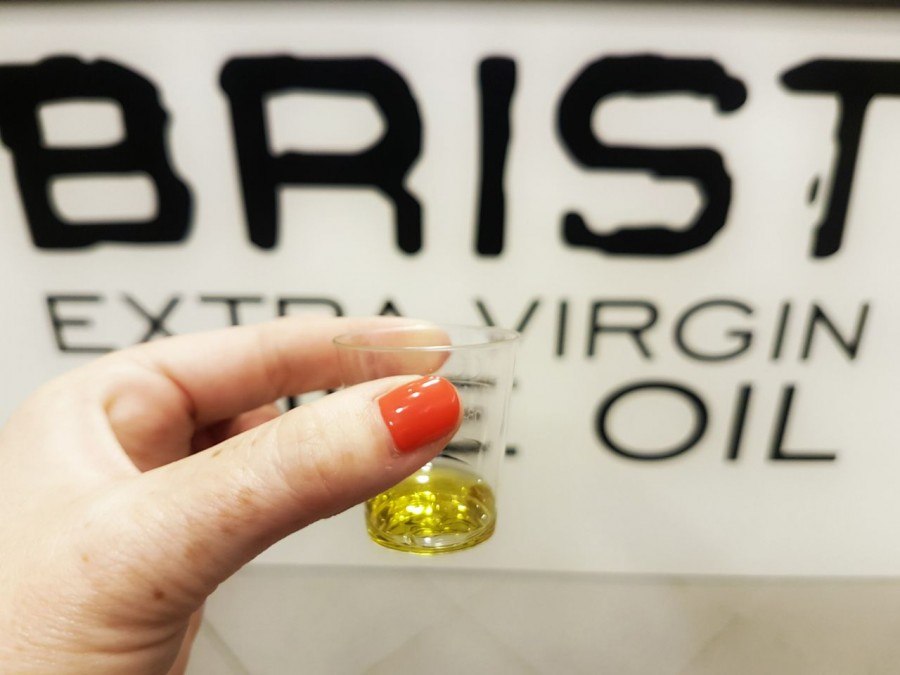
Tasty Souvenirs From Croatia: Brist Olive Oil
Olive Oil is one of the essential ingredients of the Mediterranean diet. The olive tree is a species of the Mediterranean climate, and olive oil in history was used in the nutrition of people in the Mediterranean region, for medicinal purposes, body care products, lighting and many other uses. According to Roman writers Pliny and Cicero, Aristeo was the one who discovered the olive tree and found ways of extracting oil from the fruit. Millennia of uses for olive oil, in a region where the climate, location, and type of land are ideal for the production of olive oil, resulted in the manufacture of high-quality varieties, like Istrian olive oils, which are among the best in the world, obtained from hand-picked olives.
Olive oil is a great gift because it has a Mediterranean touch, it’s very healthy, and it’s used for cooking and cosmetic purposes. The purest, highest quality and most expensive olive oil is extra virgin olive oil; that means it is cold pressed, produced only by mechanical means. Domestic extra virgin olive oil can be purchased from private producers along the whole Croatian coast at a price of 60 Kuna to 100 Kuna per liter.
Local Tip: Head to Brist Olive Oil, in Istria where the Puhar family who produce olive oil from traditionally grown native olive varieties from their six-hectare grove. They also hand-pick all the olives – no machines are used in the picking process. If you want to be daring, drizzle some of the BRIST Intenso Olive Oil over premium vanilla ice-cream – I know it sounds odd, but it is a real treat.
Cheese
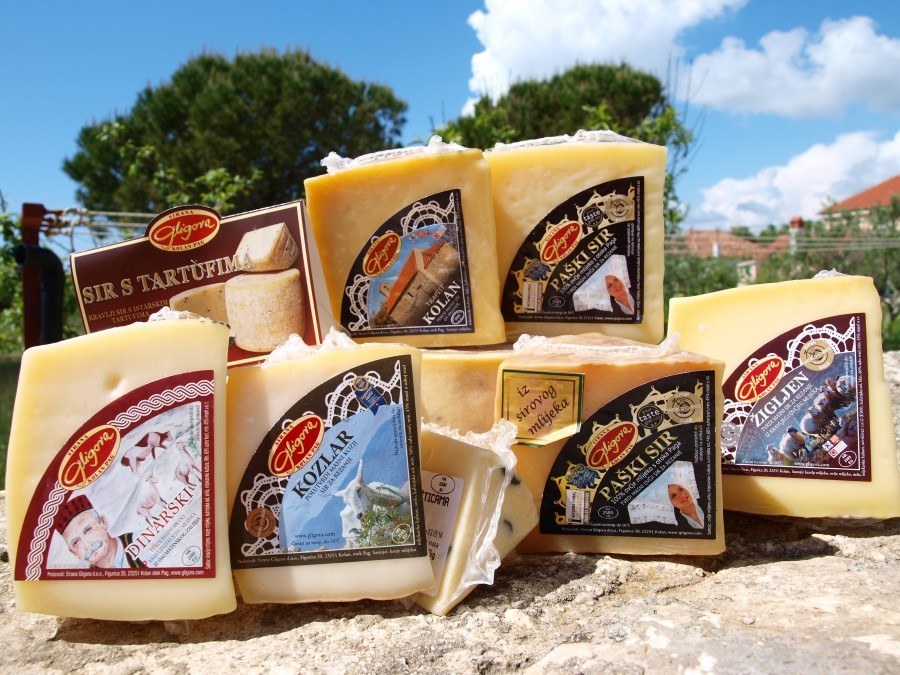
What to Buy in Croatia: Paski Sir on Pag Island
Cheese lovers raise your hands! Pag Island has the yummiest cheese in all of Croatia – you’ll need to look for it when you are here. It’s called Paški Sir. What makes Paški Sir so good I hear you ask? It’s a few things. One of them is the Bura, a strong northerly wind which has been battering the Pag Island since the beginning of time. There is very little vegetation on the island due to the high winds and the salt that is sprayed all over the island by the Bura. This means that only limited vegetation survives which happens to be wild aromatic herbs, shrubs, and grasses. All of which are salted naturally by the Bura wind. The 35,000 sheep on Pag Island graze on said herbs (like sage) which produce a unique tasting milk. Every 7-10 days the sheep are rotated into a new pasture. It’s the unique milk which goes into the magnificent tangy Paški Sir.
Another reason is the sheep are outside, left in their natural surroundings. Not stuck in small cages, barns or otherwise. Each sheep is hand milked and is treated with love.
You can get other yummy cheeses from Pag if you head to the Gliglora cheese tasting room (you can even do a tour of the factory on some days).
But Which Cheeses Should You Buy?
We suggest you get your hands on:
Paška Skuta – Fresh cheese similar to ricotta, a highly albumin cheese made from the whey of Paski Sir and Zigljen.
Trapist – A semi hard cows milk cheese.
Figurica – A hard cheese from a delicate fusion of cow and sheep milk
Dinarski – Produced exclusively from cow milk from the Dinaric Alps in southern Croatia, with added goat milk from the Zadar hinterland for added complexity
Paski Sir – Hard sheep’s milk cheese produced exclusively from milk for the sheep on the island of Pag
Kažun from Istria
A very charming and popular indigenous Croatian souvenir is a miniature replica of the Istrian Kažun. A kažun is a circular field house with a conical top, built from natural stone with no windows. It was first used to house people indigenous to the Mediterranean, and then shepherds as a shelter from bad weather and storage of field tools.
Along with Istria, it is characteristic of coastal regions in Croatia and other Mediterranean countries. This original souvenir combines history, beauty, and workmanship. It’s a faithful replica of the real Istrian Kažuns, and will certainly be an ideal gift for those who appreciate Croatian heritage and arts.
Prices at street stalls throughout Istria, and in souvenir shops, run about 50 Kuna for smaller to about 180 Kuna for larger Kažuns.
Lavender
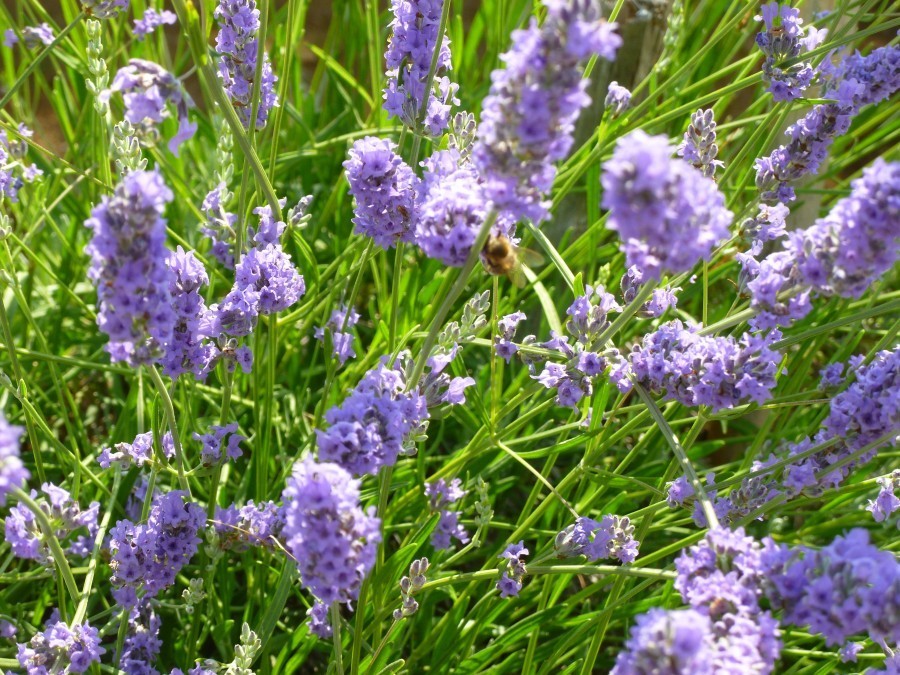
Lavender is a fragrant purple plant that grows throughout the Mediterranean, all the way to Africa and South-East India, and has its origins in the Greek islands. In these areas, lavender was already used 2500 years ago, and it is believed that the name lavender comes from the word lavare – meaning washing – because the ancient Romans used it for scented baths in the form of lavender oil.
Dried lavender was used in childbirth and the liturgy, and the Greeks used it for medicinal purposes, which has been preserved throughout history. Lavender is often used to help shortness of breath, pain relief, and infection. Fragrant lavender bush is long blooming, the decoration of any garden that attracts bumblebees and butterflies, and its dry flowers have multiple applications, from being thrown at weddings instead of rice, to fill the pillow to help you fall asleep, to defense against moths in your closet (decorative bags are filled with dried lavender flowers and soaked with lavender oil).
In Croatia, the main area for lavender farms are villages on the islands of Hvar, Grablje and Brusje; it successfully grows throughout Dalmatia and Istria, and more recently is also cultivated in Slavonia.
On the markets, private farms, and in souvenir shops throughout Croatia, scented and painted canvas bags with dried lavender flowers can be bought for about 5 Kuna, as well as lavender oil, which costs about 200 kunas per liter. Dry lavender flower, in packages of 500 grams, usually costs from 30 Kuna to 50 Kuna. Various pillows and cushions as car headrests can be purchased as can lavender wardrobe bags and soaps. Essential oil costs 300 kn for a half-litre and a liqueur made of lavender can sometimes be found if you are lucky!
Zovnica
Zovnica is a hand woven wool bag with colorful patterns and long handles, made using a loom. The children of the area used Zovnica for carrying books to school, and girls wore it to ceremonies and mass. Before getting married, girls used to weave Zornicas as part of a dowry. When the suitors visited, they gifted them with apples, walnuts and other gifts presented in their Zovnicas. These beautiful bags with gorgeous patterns, vibrant colors and tradition will delight lovers of heritage and folk tradition. They can be purchased from stalls, fairs, souvenir shops and artisans in Dalmatia.
Rakija
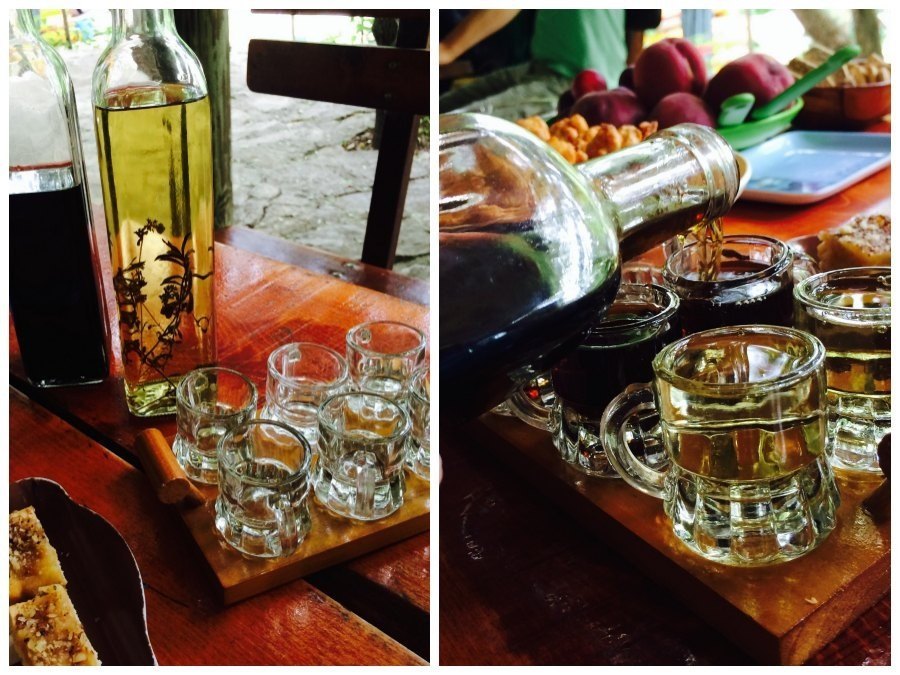
Rakija is a colorless, strong-smelling alcoholic drink (maybe like vodka to some) which is produced by distillation of fermented fruits. It contains about 40% alcohol, and homemade rakija can contain closer to 50-60 %. Rakija is the national drink of many Slavic nations and is popular in Croatia. It’s produced by distilling fermented fruit and there are many types of Rakija.
One popular type of rakija along the coast of the Adriatic Sea is lozovača, produced by distilling the fermented residue of pressed grapes. The resulting lozovača is sometimes enriched with additional ingredients such as herbs, cherry, honey, and nuts. Lozovača enriched with herbs is called travarica, and with honey is called medica. Medica contains 15-25% alcohol and is popular in Istria, due to its sweet flavor.
Rakija is also produced from apples, grapes, figs, quinces, apricots, pears and walnuts.
In the street stalls and souvenir shops around Croatia, decorated bottles of all the above types of rakija are for sale. In a transparent glass bottle of travarica, you can see the medicinal Dalmatian plants, which give an earthy and rustic appeal. As rakija is often used an aperitif, or with Dalmatian prosciutto and cheese, pick up a set of small glasses to complete the gift.
Gusle From The Dalmatian Hinterland
Gusle is a folk instrument of the Dinaric region of the southern Balkans and neighboring countries, and they consist of one or two strings and a bow. The sound is produced by pulling the bow across the strings and is usually made from maple, walnut, or ash, with only one log from a quarter of the tree hollowed out. The origin of gusle players is tied to the arrival of the South Slavs in the Balkans, or with Illyrians. Gusle are an important part of Croatian culture because all the important events in Croatian history are celebrated in songs by minstrels, and they represent a symbol of resistance to strangers, like the Turks. They are widespread in Dinaric culture, mostly in the Dalmatian hinterland, and today most gusle players can be found in Lika and the Dalmatian hinterland. It is here this instrument can be purchased from artisans and in fairs – be prepared shell out some several hundred to several thousand Kuna for your music lover back home if you plan to buy this Croatian Souvenir
This particular souvenir is a beautiful decoration to any home and a reminder of the glory days of Croatian history. It will bring people of Dinaric origins back to their roots, reminding them of their fathers, and perhaps inspire a desire to learn how to play for themselves.
Coffee
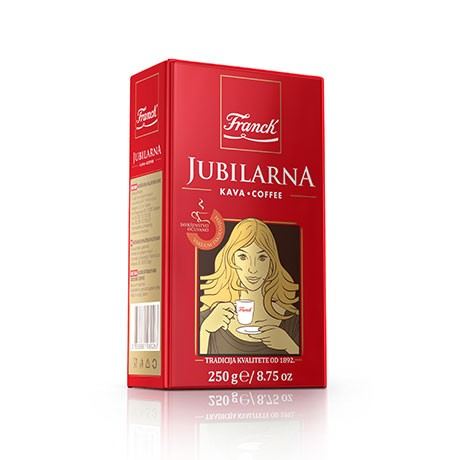
Coffee (also known as Kava) to Croatian’s is important. An excellent strong coffee, whether it be an espresso from a coffee bar or Croatian coffee cooked on the stove top at home is critical to a Croatian’s existence. You simply must order traditional coffee while visiting, but make sure to take some home for your loved ones who need a little lift in the mornings!
Want to buy Croatian coffee while you’re on vacay? Franck is our top pick for Croatian coffee to carry in your suitcase thanks to its brick-like shape.
Salt
Salt is a valuable resource found in Ston, Pag Island and Nin, near Zadar. In fact, the giant salt crystals from the Nin Saltworks have been harvested for generations and generations (for 1500 years!), bringing this everyday commodity to the Croatian table. The salts harvested from Ston, Pag and Nin are all natural and have a flavor unique to their region. A trip to Nin’s salt pans and the museum is a must for any foodie, but don’t forget to pick up a bag of salt to bring home for your own table!
Salt is probably one of the best souvenirs from Croatia you can lug back with you – it’s easy to stuff between clothes, very few countries will have restrictions on it and let’s face it- we all eat it daily!
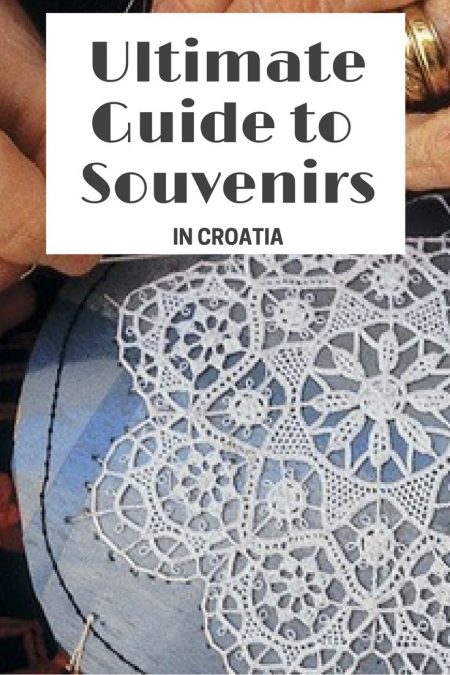
Sopile
Sopile is an instrument similar to an oboe that is played in the Kvarner region. It consists of double tabs which are made from reeds, and mouthpiece in the form of a cone, which is made of wood. Sopile are always played in pairs, so there is a big and small, or a thinner and thicker sopile. They were played most often on three occasions: dancing on Sundays and holidays when young people gathered in the square, in front of the church after the evening Mass or a wedding when sopile were set to sound unanimous, and in church processions.
This instrument has a distinctive, penetrating sound and is a remarkable gift for lovers and connoisseurs of music. Handmade sopile can be found at sopile makers in Kvarner, the Kastavština region, Novi Vinodolski, and on the island of Krk at a cost starting at 500 Kuna.
Something Handmade or Designed in Croatia By Croatians
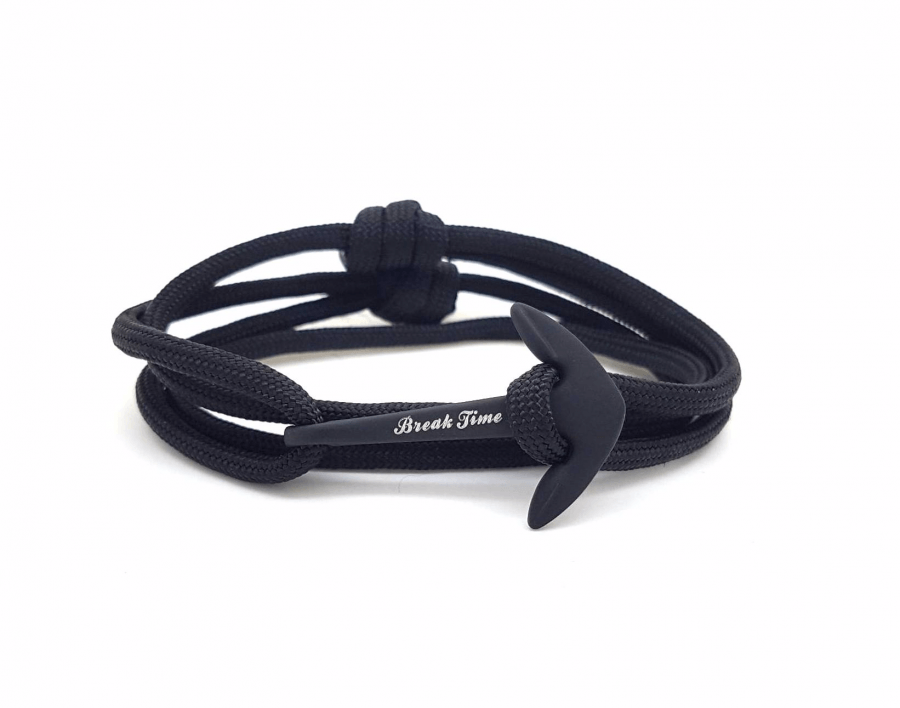
What to Buy in Croatia – BreaktimeHandmade Croatian goods can’t be beaten! Some boutique companies are selling Croatian inspired products designed by Croatians. Just like, Craaloosh Jewellery designs handmade, beaded replicas of traditional Croatian styles – the perfect statement necklaces for any accessory lover on your list.
The Croatian Design Super Store in Zagreb features modern Croatian designs on an assortment of products – jewelry, kitchenware, art, clothing and more. Designs come and go, so scoop up the one of a kind gifts while they are available! I’m currently loving the Croatian inspired Maraska Cherry Anek kitchen towels and the Terracotta Serving plate inspired by the Dalmatian word marenda.
And last but in no way, least are nautical bracelets from BreakTime Nautical. They are handmade in Croatia; you can pick up yours in their locally owned and run stores in Split and Dubrovnik. I took a huge bag of these bracelets (and nautical rope keyrings) back to Australia when I went – they are super stylish!
Still wondering what souvenirs to buy in Croatia? Or have we now made your choice impossible?
So, now you know what you buy in Croatia – what souvenir will make the trip home in your suitcase?
